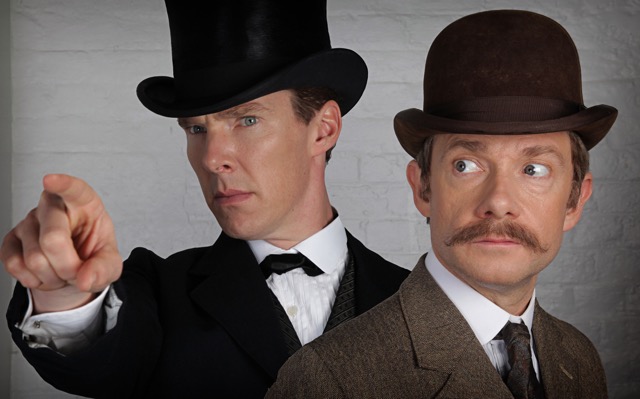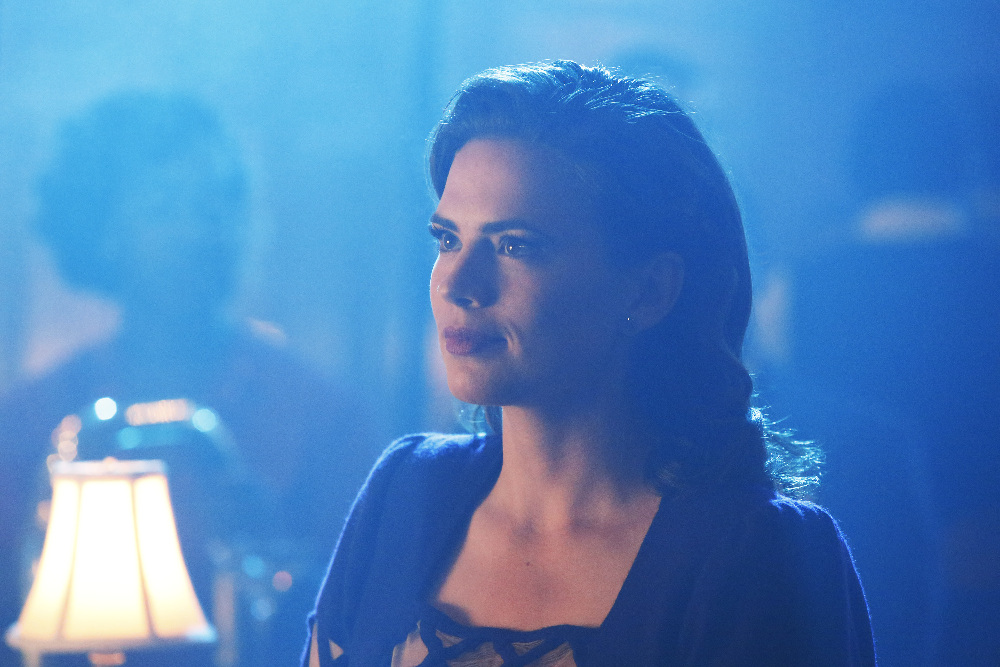
As featured in COLORBLOCK Magazine, February 2016
The patchiness of LGBT representation occurred due to several factors, such as cultural reticence, religious arguments, and entertainment companies worried about their bottom line domestically and internationally. The voids in representation have led to fans coming to their own rescue and creating alternate (and sometimes more accurate) readings of characters and their love lives.
The process of finding alternate interpretations of the characters not only provides fans who feel neglected by the entertainment world–such as LGBT fans and fans who are LGBT allies– the ability to participate in their favorite film or TV fandom, but also eases the anxiety created when an LGBT metatextual reading of a character, especially characters who already have a foothold in discussions surrounding LGBT media, doesn’t get the fair play it should in canonical tellings or retellings of a story. Basically, meta readings, and the subsequent fan creations that result from them, give fans the chance to tell the story from their point of view. They get to create a world that includes them in all of their complexity by allowing the canonical characters to have complexity not originally given to them by their original creators.
Sherlock Holmes and John Watson from Sir Arthur Conan Doyle’s Sherlock Holmes series of mysteries are two great examples of when the canonical and meta worlds collide.
| Want to read more about diverse entertainment? Read the February issue of COLOR BLOCK Magazine! |
|---|
|
|
Canonically, Sherlock and John are friends, the most classic example of platonic love and partnership. However, the two characters have also been one of the many touchstones of LGBT media theory, especially where it concerns audience interpretation.
“Fans use these parallel worlds to explore what could have been or might be, especially as regards sexualities that have not found mainstream representation,” wrote Ashley O’Mara in her article, “Queering LGBT History: The Case of Sherlock Holmes Fanfic” for the site, Metathesis (metaistheblog.com). “There is no conclusive literary evidence that [Doyle] conceived of his Sherlock and John as ‘homosexual;’ their relationship presents as a romantic friendship although those were going out of fashion when he was writing. Likewise, despite queerbaiting, [BBC’s Sherlock co-writer Steven Moffat] insists that his Sherlock is not gay, let alone [asexual]. In [fanfiction] however, literally any interpretation goes.”
Those interpretations, which explore asexuality, aromanticism, bisexuality, and/or being gay, stem from said queerbaiting, which include suggestive moments in the BBC show, one of the biggest moments being during Irene Adler’s introduction in Series 2, Episode 1, in which Irene basically makes a case as to why John was actually falling in love with Sherlock without realizing it by comparing John to herself. Both John and Irene have considered themselves people who weren’t interested in men, yet, as Irene points out, both of them are very interested in Sherlock. There could also be a level of retroactive queerbating, as it were, happening within the original text itself; as O’Mara noted, Doyle was writing of romantic friendship when it was going out of style, with romantic same-sex friendship being replaced with a higher level of homophobia (at least among men; with women, romantic friendship and full blown same-sex romance was often overlooked by male society). The level of reticence around romantic friendships comes around the same time the term “homosexuality” was coined, which begs the question as to why Doyle would still consider writing Sherlock and John as a romantic friendships comes around the same time the term “homosexuality” was coined, which begs the question as to why Doyle would still consider writing Sherlock and John as a romantic friendship during such a societal change.
Meta readings have also occurred with many of today’s popular characters, such as characters in Marvel’s cinematic and TV universe. There are tons of fan creations centering around the close relationship between Captain America and Bucky (aka the Winter Soldier), Captain America’s other close relationship with the Falcon, Iron Man and The Hulk’s friendship (as shown in the Avengers movies), and the friendship between Peggy Carter and waitress/aspiring actress Angie Martinelli in Agent Carter, just to name a few.

HAYLEY ATWELL
Despite canon interpretations falling short of fandom expectation, it’s beginning to be par for the course for actors who are affiliated with the fandom to speak out on behalf of their fans’ want for more inclusive entertainment. For instance, to address the Peggy/Angie fans, Peggy herself, Hayley Atwell, told fans at last year’s Fan Expo Canada what Peggy and Angie’s relationship meant to her. “The thing that stands out for me about Peggy and Angie is it’s seldom that you see on television friendship between two women that isn’t founded on the interest of a man,” she said. “There’s a genuine affection that they have for each other; whether or not you want to project the idea that it’s romantic or sexual is entirely up to you and how you want to view it. I think there’s a mutual respect that’s quite rare that I want to see more of in film and stories.”
As you’ll read in the next article (about the meta pairing of Star Wars: The Force Awakens characters Finn and Poe Dameron), Captain America co-director Joe Russo also states that he welcomes all interpretations of Bucky and Cap’s relationship. Also worth noting about the Star Wars pairing is that John Boyega recently confirmed to ShortList writer Chris Mandle that while the Poe/Finn pairing isn’t canonical, it was definitely something that existed in the mind of Oscar Isaac, who played Poe in the film.
With more and more actors co-signing fandom imagination, the day when there will be a mainstream LGBT couple in genre films and television could be coming soon. Maybe not soon enough, to be honest, but still sooner than originally thought possible.
Related articles/sources:
The Breakout Fandom Couple of 2015: Stormpilot (“Star Wars: The Force Awakens”) (JUST ADD COLOR)
History of Homosexuality-19th Century (Wikipedia)
you have to wonder what the backstory is to this one (sherlockmeta.tumblr.com)
Not Gay for Each other: Johnlock as Aphrodisiac (sherlockmeta.tumblr.com)
Meta Masterlist (http://loudest-subtext-in-television.tumblr.com/)
Meta: The Case of John Watson’s Sexuality (sherlockforum.com)
Fan Expo 15: Atwell Declassifies “Agent Carter” Season 2 And Chris Evans’ Abs (Comic Book Resources)